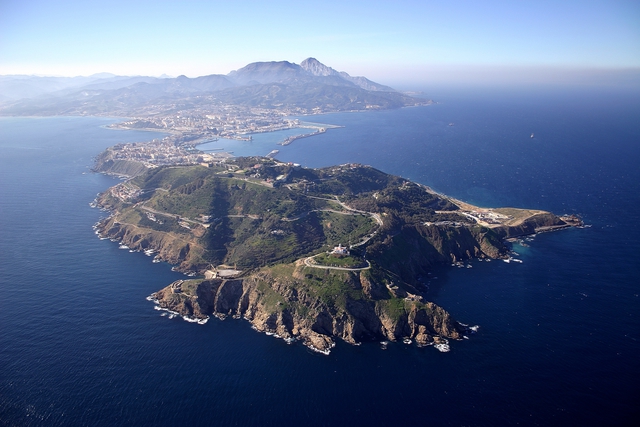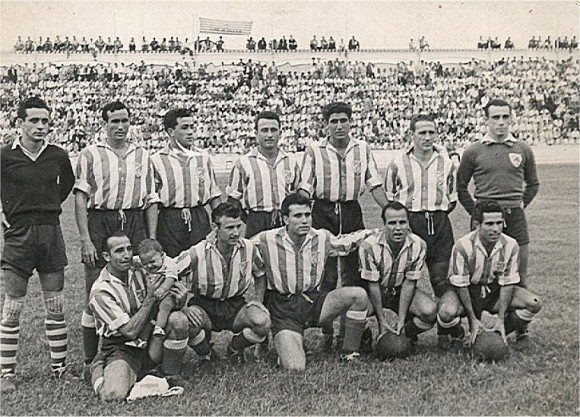A club with a special history and location

Ceuta is one of the participants in Spanish football with a profile like no other. Representing one of the two Spanish cities on the African continent, Ceuta has a tumultuous history with many seasons in both the Segunda División and amateur football. However, the club’s recent growth has returned optimism to the club. Welcome to…Ceuta.

An autonomous city
Spain consists of 17 autonomous communities and two autonomous cities, among which Ceuta, bordering Morocco at its most northern point. The city has been the center of many sieges, wars, and other battles but remained under Spanish rule during most of the last centuries. This means that the city has primarily Spanish traits in many different dimensions.

For example, the main language is the Andalusian dialect of Spanish, while the city also holds political ties with the southern region. However, there are also many Arabic influences present in Ceuta, which can be illustrated by its gastronomy, mostly inspired by the Andalusian and Moroccan gastronomy.

Ceutan football
The first club that conquered the city of Ceuta was CS Ceutí, which merged in 1932 with Ceuta FC to create Ceuta SC. This was the first club that united different fanbases in the city into one fanbase and, thus, became the representative club of Ceuta. The caballas opened a new stadium, reached the quarterfinals of the Copa del Rey, and competed in the Segunda División, winning the championship in 1943. Unfortunately, Ceuta did not achieve promotion to the Primera División.

In 1956, Morocco became independent of France and Spain, which also impacted football: many teams which used to compete in Spanish football would compete in Moroccan competitions. The strongest team to do so was Atlético Tetuán, that used to play in the Primera División. Most of its directives moved to Ceuta and merged with its representative club to create Atlético Ceuta. Curiously, Atlético Tetuán was refounded in Morocco as Moghreb Atlético Tetuán, a team that currently plays in the top tier of Moroccan football.

The reborn Ceuta took Atlético Tetuán’s place in the Segunda División and competed here for 11 seasons. However, after Ceuta’s relegation to the amateur leagues in 1970, the squad would not recover quickly. In the remainder of the 20th century and the beginning of the 21st century, the Tercera División was the highest competition in which the ceutíes would participate.

Ever since Ceuta’s drop to the lower leagues, new teams with similar names have been founded to put the city on the map again. These clubs used to outperform the historic Ceuta during the latter club’s stay in the lower leagues. Some of these new ‘Ceutas’ reached the Tercera División, Segunda División B, or even the Segunda División. The most notable Ceutan clubs in these decades were AgD Ceuta, AD Ceuta, and AC Ceuta, the latter being the historic club founded in 1956 after the merger between Ceuta SC and Atlético Tetuán.

After financial problems, mergers, and other developments, AC Ceuta was revitalized in 2013 and was renamed AD Ceuta FC, the name it still uses. It seemed like the union of local football was a positive development, as the club seemed more stable than before. This resulted in many participations in the Tercera División and, in the 2020s, in two consecutive promotions, meaning that the caballas are present in the third tier since 2022 and are doing everything they can to reach the Segunda División as soon as possible. Moreover, they are glad that the current representative club of Ceuta is the same one as the ‘historic’ club that played for more than a decade in the Segunda División.

One club, two rivalries
Due to its unique location, Ceuta has not one but two historic rivals. The first one is Melilla, the other Spanish autonomous city on the African continent: the North African derby. Due to the similarities between the cities of Ceuta and Melilla and the good relationship between the directives of both clubs, this rivalry is a healthy and cordial one. Still, it’s a unique derby in Spanish football due to its location: Ceuta nor Melilla have their stadium on the Iberian Peninsula.

A hotter rivalry is the one between Ceuta and Algeciras: the derbi del Estrecho. However, these teams aren’t arch-rivals either, as the algecireños have a more intense rivalry with Balona. Still, Algeciras – Ceuta equals a spectacular game, fueled by the many matches between the teams in the 1950s and 1960s.

The future
Since its revival in 2013, Ceuta has lived zero relegations and two promotions, being very close to setting foot again in the Segunda División. However, before being able to do so, Ceuta will have to compete well against historic teams like Málaga, Córdoba, and Real Murcia and against local rivals like Melilla, Algeciras, and San Fernando. This was…Ceuta.

Sources
- Borchers, L. (2021). GOLAZO. Self-published.
- Borchers, L. (2022). CARA O CRUZ. Self-published.
- http://lafutbolteca.com/agrupacion-deportiva-ceuta-futbol-club/
- http://lafutbolteca.com/sociedad-deportiva-ceuta/
- http://lafutbolteca.com/asociacion-deportiva-ceuta/
Leave a comment